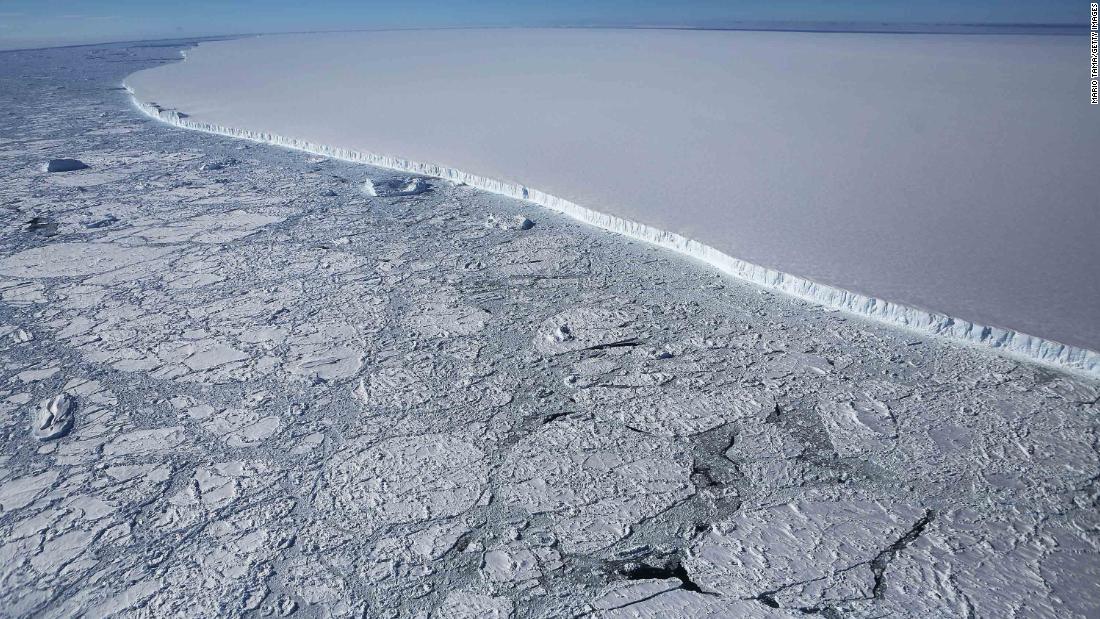
In a forecast study, scientists found that 34% of the surface of all ice shelves in Antarctica, measuring about half a million square kilometers, could destabilize if world temperatures rose by 4 degrees. About 67% of the surface of the ice shelf in the Antarctic Peninsula would be at risk of destabilization in this scenario, the researchers said.
Ice shelves are permanent floating ice platforms attached to coastal areas, formed where glaciers flowing from land meet the sea. They can help limit rising global sea levels by acting as a dam, slowing the melting flow of ice and water in the oceans.
Every summer, the ice on the surface of the ice shelves melts and faces smaller gaps in the snow below, where it usually freezes. But when there is a lot of melting and little snowfall, this water instead rises to the surface of the ice or flows into crevices. This deepens and widens the cracks, causing the shelf to fracture and collapse into the sea.
“Ice shelves are important buffers that prevent land glaciers from flowing freely into the ocean and helping to raise sea levels. When they collapse, it’s like a huge stopper that is taken out of a bottle, allowing unimaginable amounts of water. from glaciers to pour into the sea, “said the study’s lead author, Ella Gilbert, a climate scientist in the University of Reading’s Department of Meteorology.
Gilbert told CNN that low-lying coastal areas, especially small island states such as Vanuatu and Tuvalu in the South Pacific Ocean, are most at risk of global sea level rise.
“However, coastal areas around the world would be vulnerable, and countries with fewer resources available to mitigate and adapt to rising sea levels will have more serious consequences,” she said.
In the new study, which used high-resolution regional climate modeling to predict the impact of rising melting and runoff on ice shelf stability, researchers say limiting temperature rise to 2 degrees Celsius, rather than 4 degrees Celsius, would reduce half the area at risk and potential to avoid significant sea level rise.
The Intergovernmental Panel on Climate Change concluded in an important report that we have until 2030 to drastically reduce our dependence on fossil fuels and prevent the planet from reaching the crucial threshold of 1.5 degrees Celsius (2.7 degrees Fahrenheit) above pre-industrial levels. .
Global net carbon emissions are expected to fall by 45% from 2010 to 2030 and reach “net zero” around 2050 to keep warming around 1.5 degrees Celsius.
“The findings highlight the importance of limiting global temperature rises, as set out in the Paris Agreement, to avoid the worst consequences of climate change, including rising sea levels,” Gilbert added.
In the Paris Agreement, 197 countries agreed to keep global temperatures “well below” 2 degrees Celsius above pre-industrial levels and to continue efforts to limit it to 1.5 degrees Celsius.
Gilbert told CNN that high temperatures mean melting is more frequent and intense.
The researchers identified four ice shelves that would be threatened by a warmer climate: the Larsen C, Shackleton, Pine Island and Wilkins ice shelves, which are vulnerable because of their geography, and the expected runoff in these areas.
Larsen C is the largest remaining ice shelf in the Antarctic Peninsula, and the Pine Island Glacier has received a lot of attention in recent years because it melted rapidly in response to climate change, Gilbert said.
If all these ice shelves collapsed, which is not guaranteed, the glaciers they currently hold would flow into the ocean, contributing to sea level rise – potentially by tens of centimeters, she explained.
The study was published Thursday in the journal Geophysical Research Letters.